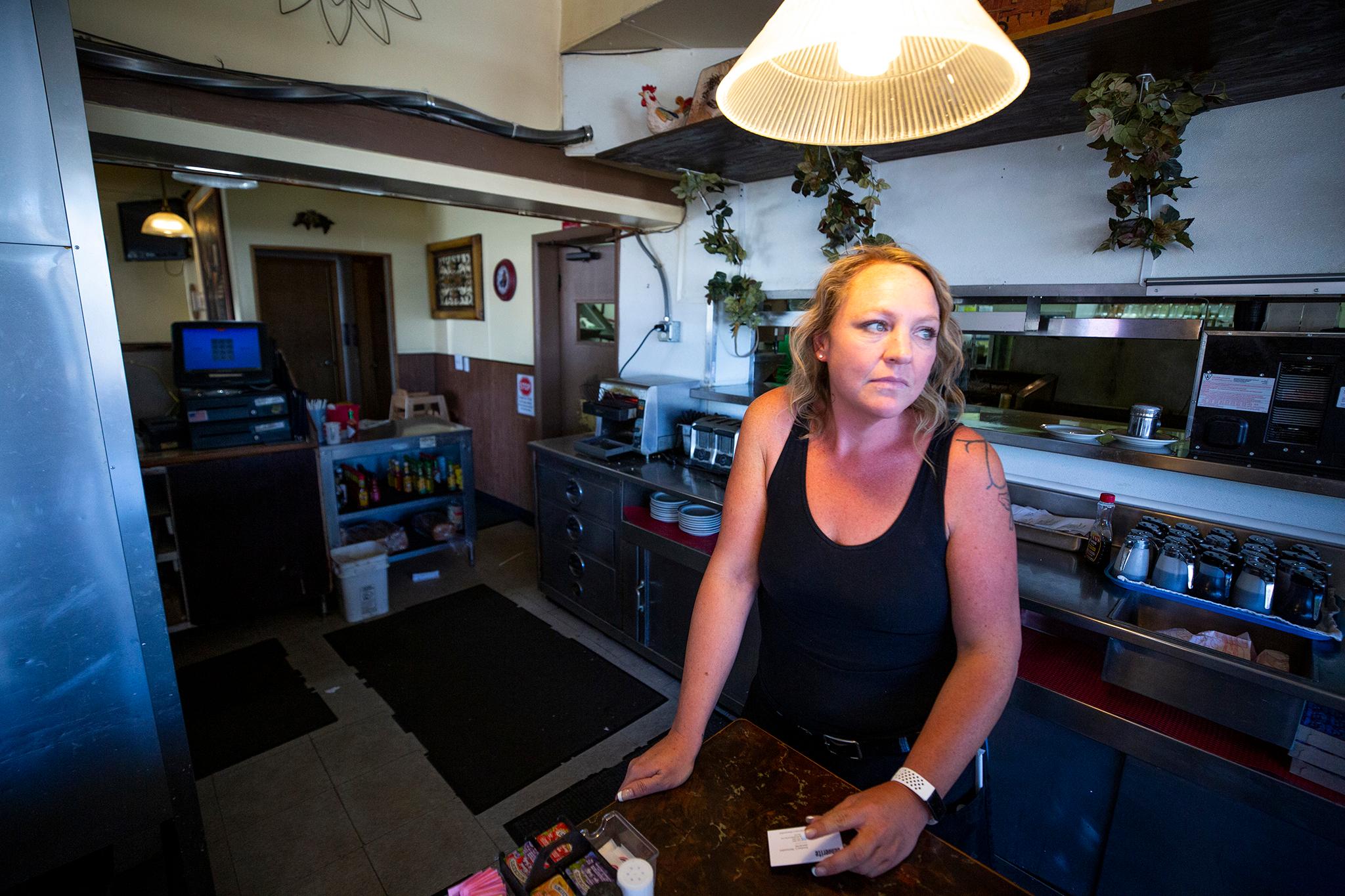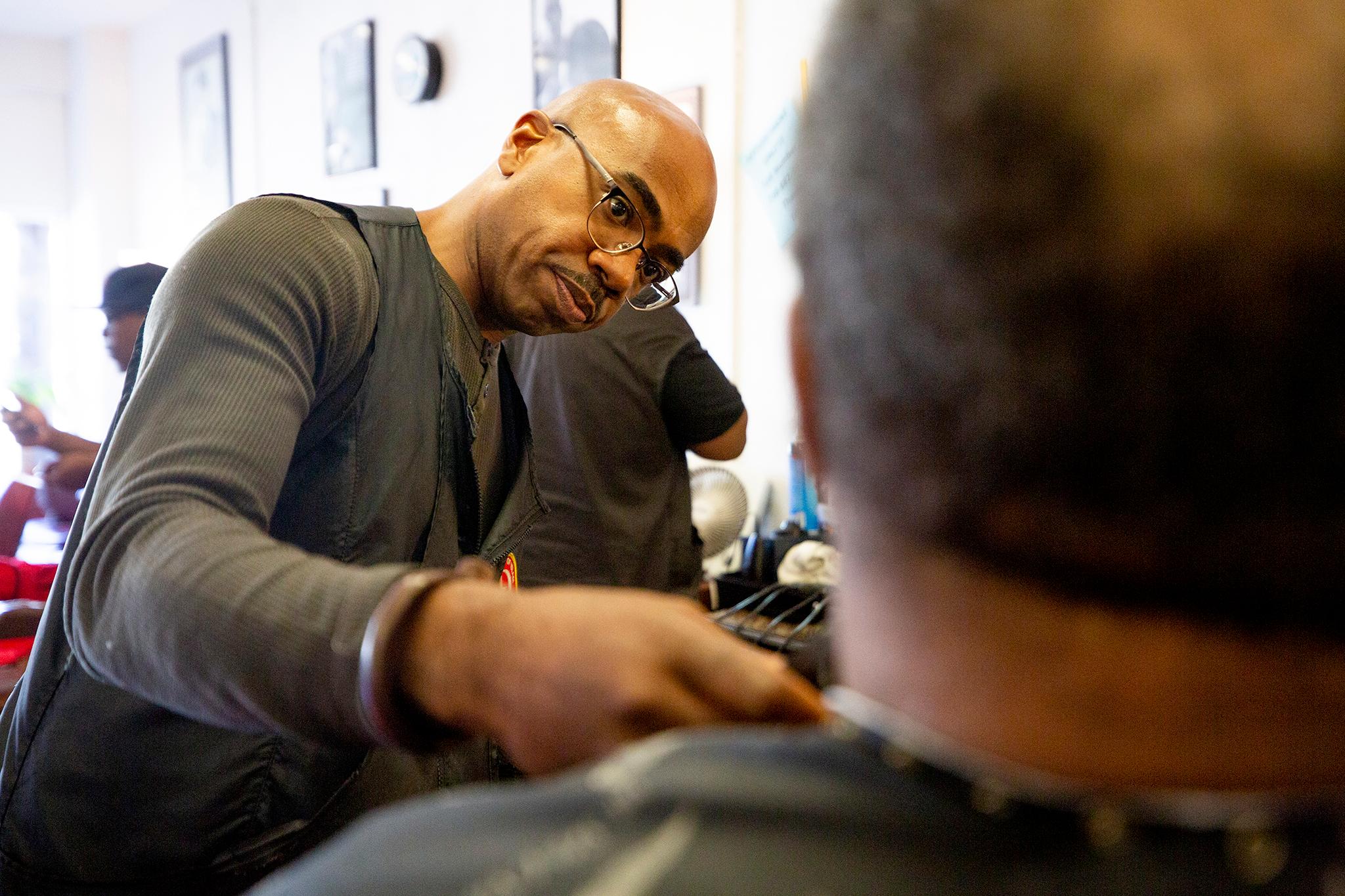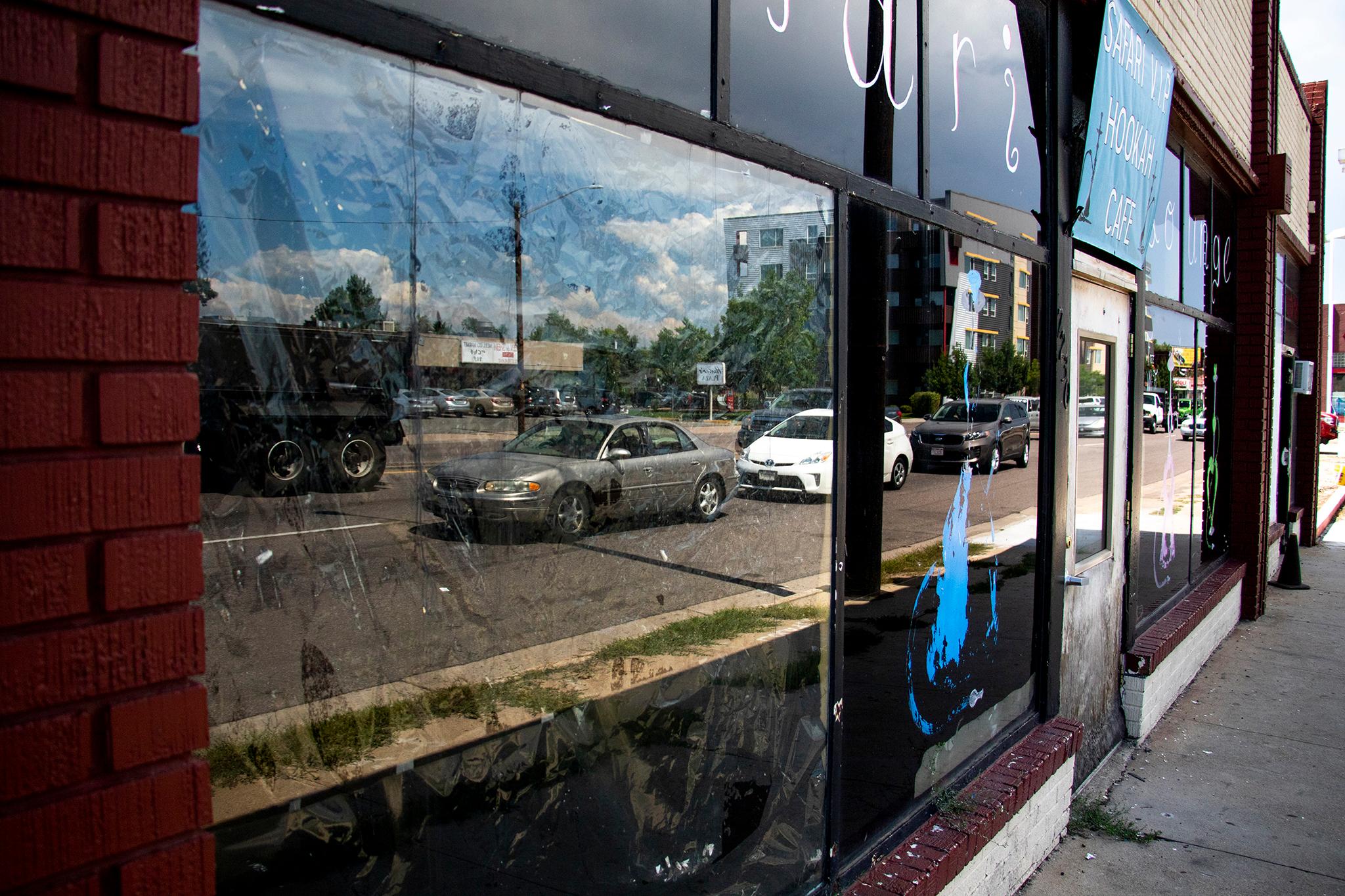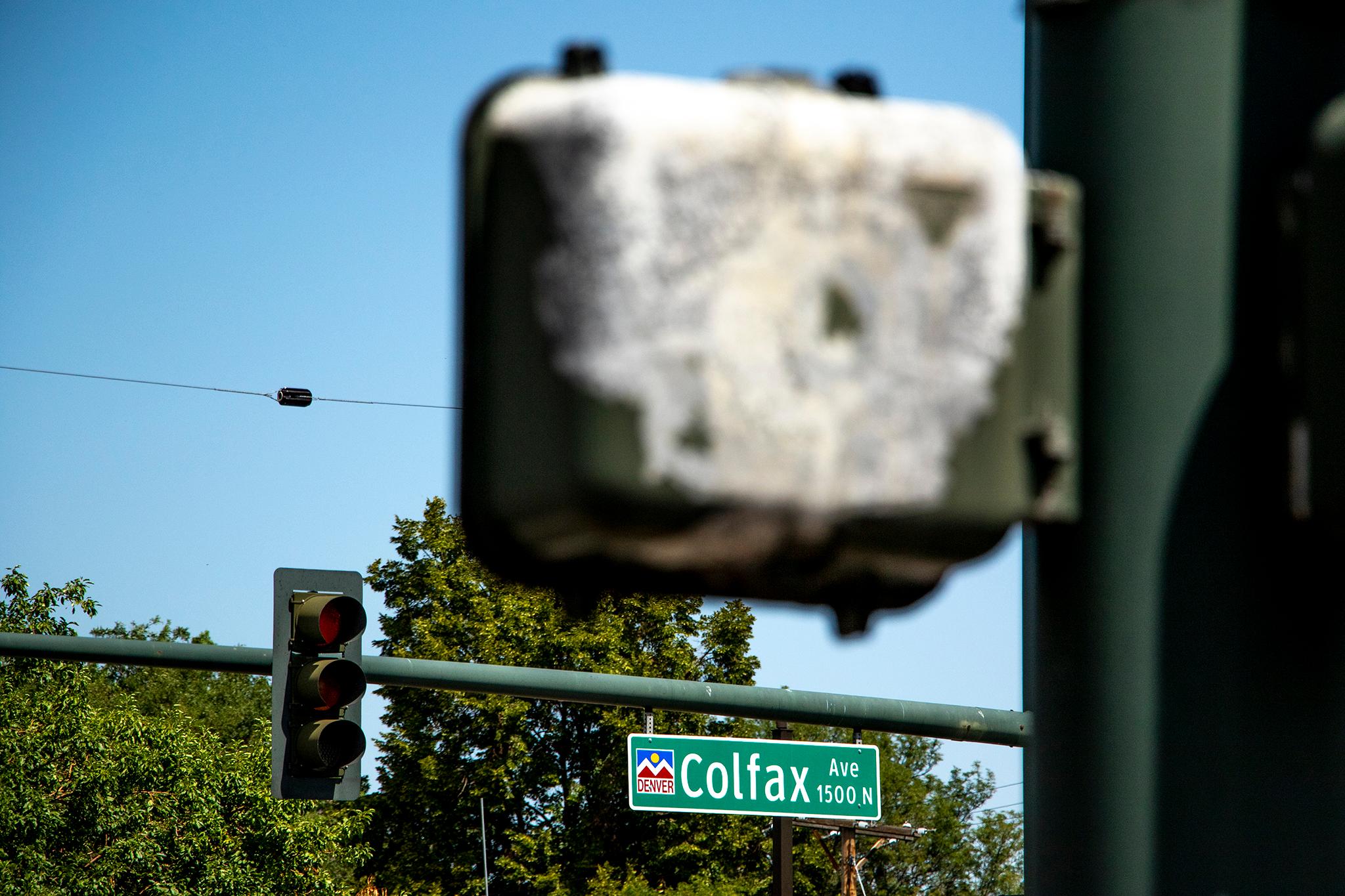Kellie Plessinger lives in Aurora now but she grew up in Denver around a notorious strip of East Colfax that, back in the day, may have inspired conservative columnist George Will's infamous line comparing this street to a warzone.
Plessinger works at the Ranch House Cafe at Colfax and Syracuse Street. In the late 1980s and early 1990s, her father owned now-shuttered bars including the Drift Inn and Mr. Vons Alamo.
"Interesting, to say the least," she said to describe this stretch. "Especially at night. It gets even worse."
She has some ideas on how to improve the area rife with vacant lots -- and buildings that look vacant but still house businesses. She thinks new stuff would be nice, but so would updating existing buildings. She would like to see some help for people experiencing homelessness, perhaps some aid to folks with mental health illnesses.
There's really only one thing she no longer wants to see.
"Definitely no more bars," she said, before adding another thing to her list: High-rise buildings, which she thinks would look weird among car repair shops and the local Dairy Queen.

At this point, these questions are no longer abstract because the potential is there, thanks to folks sitting in nicer digs who decided it was time to ignite change on the corridor.
It started in August when this area was officially declared blighted by the Denver City Council. The move created what's called an urban renewal area on East Colfax between Monaco Parkway and Yosemite Street that includes 143 retail and residential properties. The new classification means that if anyone -- or more precisely, any developer -- begins sprucing up the area, they would now have help getting it done.
When that decision was made, it opened up the possibility for new tools, like tax increment financing, which uses sales taxes and property taxes to help pay for new development and make it more attractive for potential developers.
"Urban renewal" has been ongoing in Denver for seven decades.
It's Tracy M. Huggins's job to make sense of blight. As the executive director at Denver Urban Renewal Authority (DURA), a quasi-governmental organization, her job is to explain how it works and why she deems the designation necessary.
DURA was created in 1958 by the City Council. Its first four projects were Avondale, Blake Street, Jerome Park and Whittier. They were the first places the city found to have "slum conditions."
On a recent Friday morning, Huggins sat next to a wall inside a conference room at DURA headquarters in downtown Denver. The wall held before and after photos of the authority's modern-era projects in chronological order, starting in 1992. Fittingly, the building where DURA is housed, the Denver Dry Building, is one of its successful redevelopment projects and one of the first photos on the timeline. The other photos feature iconic structures emblematic of Denver's downtown renaissance: Denver Pavilions, Elitch Gardens, Larimer Square, the Pepsi Center.
The "before" photo for the Pavilions is especially stark. It depicts a massive parking lot, right in the middle of what is now the 16th Street Mall.
"It helps us all remember that these investments have really helped our city," Huggins said.
Her development wall of fame is running out of space because they keep adding projects, she said. She wants to update the thing with some type of digital display.
Huggins began working at DURA in 1992. In the 1980s, downtown Denver was not the Millennial-drawing, tech-friendly boom town with a growing dining scene it is today. Downtown was much less bustling. Developers didn't want to touch its buildings with a mile-high pole. Most people didn't stick around downtown after work, while department stores that had long been centerpieces for shopping areas were leaving the city and moving to the suburbs.

A sizable chunk of downtown was redeveloped by establishing an urban renewal area -- the same mechanism now in place for East Colfax. It's an area of downtown Huggins said includes 53 blocks.
"For us, it's a matter of trying to show the value that we believe we bring to the city," Huggins said.
Ken Schroeppel, an urban and regional planning assistant professor at CU Denver, said modern urban renewal traces its history to the 1950s. At the time, the federal government was trying to keep older urban areas from deteriorating after disinvestment and suburbanization following World War II.
Urban renewal as a federal program began with the 1949 Housing Act, which Schroeppel said focused on slum clearance, developing affordable housing, improving car access and improving urban centers. Schroeppel said Washington encouraged states to adopt similar laws by reminding officials that federal funds were available, which usually meant big bucks.
"All 50 states adopted these urban renewal statutes, and in those statutes, it basically lays out the requirements that cities need to do and follow-up to be able to use urban renewal powers and resources available to them," Schroeppel said.
But there were unintended consequences for Denver. In 1967 "urban renewal" meant razing historic buildings and turning them into surface parking lots.
The laws have been tweaked over time -- now they're filling the surface lots back in -- but Schroeppel said they're mostly similar.
While "blight" is a word casually thrown around to describe dilapidated conditions, it's actually defined by state law.
To begin the determination process for an area, DURA is usually alerted by the city planning department or a City Council member who reaches out and asks for their input.
The government uses 11 factors to determine "blight." They include things like deteriorated or deteriorating structures, unsanitary or unsafe conditions, environmental contamination and conditions posing a threat to life or property "by fire or other causes."

In order for the area to be considered blighted, there has to be evidence that those conditions are limiting or impairing development in the area. So in other words, it has to be shown that the poor conditions are impeding the ability to improve those conditions.
Details are contained in a condition study (they used to be called "blight studies" but Huggins said they changed the name). Those are typically commissioned by DURA and completed by a third-party firm. These firms go out, look at the area and detail what they see. It usually takes four of the 11 blight factors to earn a recommendation. The East Colfax blight study found five blight factors.
As of this month, Huggins said no redevelopment projects have been submitted for the area. DURA has gotten some interest from existing business owners about making improvements.
Terms like "revitalization" and "blight" evoke a lifeless, dilapidating place. That's not how everyone sees things.
Having East Colfax lose its characters and the people who have helped craft its personality is a big concern for some opponents of the plan.
Councilwoman Candi CdeBaca focused on displacement when the vote to consider the urban renewal area was taken up by the City Council. She joined Councilwoman Stacie Gilmore in voting against establishing the urban renewal area, though the plan passed 11 to 2.
"Several times, we saw that urban renewal has deepened race and social injustice in our country and our community here in Denver under the guise of helping us," CdeBaca said during the Aug. 26 meeting. She has pointed to Five Points, which underwent a "revitalization" program starting in 2012 and is one of the city's most rapidly gentrified neighborhoods.
Geoffrey Propheter, an assistant professor of public affairs at the University of Colorado Denver, said urban renewal is essentially politicians playing catchup -- if governments had paid more attention to these areas in the first place, they wouldn't need as much intervention.
"It's a way to wipe the slate clean," Propheter said.
Propheter said the scale seems to tip towards developers because they are the ones receiving favorable financing options.

Of course, there are other ways to raise money for projects. Denver allows business improvement districts, those mini-governments allowing residents to tax themselves to create a funding pool for building new stuff and maintaining old stuff. But they don't often come with access to federal funds, which is usually more stable and, more importantly, usually more money, Propheter said.
"At the end of the day the people who are harmed the most from these policies are low-income renters," Propheter said. "If you're going to speed up development, you're going to speed up the consequences."
Business owners like Erik Duplessis, who owns Precision Kuts & Styles, a barbershop on East Colfax near Quebec, worry that more development will push their businesses away. He doesn't own the building, he rents. He's been there since 2003.
He said there are "seedy" and "sketchy" areas on Colfax that need work, but he doesn't want to leave. He does want to see more improvements, like adding affordable housing options. His business falls within the urban renewal boundaries.
"The thing is, we like the area. We love the street," Duplessis said. "We'd hate to be pushed out, just due to the high rent and the cost of living in the area."
Another East Colfax barbershop owner, Herman Muhammad, owner of Supreme Style Barber Shop, moved his shop from Park Hill to East Colfax seven years ago. Like Duplessis, he rents the space. Unlike Duplessis, he thinks the urban renewal area could help transform the street for the better and cited the transformation in LoDo. He didn't know his business was now in an urban renewal area.
Muhammad would like to see more spaces made available for small businesses and programs that help businesses buy properties instead of renting them.
"It definitely needs to be improved," Muhammad said while cutting a customer's hair. "In my view, it depends on what kind of development is brought in."
Muhammad doesn't take any issue with the blight designation as long as it produced actual change.
Duplessis, who knows Muhammad, also wasn't super familiar with the urban renewal area or the blight designation.
"It's kind of a dig," Duplessis said of the term.
Monica Martinez, executive director at The Fax Partnership, supported the plan.
The Fax's mission is to "revitalize" the corridor. Martinez said in the last four to five years the group has pivoted to prioritizing affordable housing to reach that goal. East Colfax has a 46 percent cost-burden rate, which means that nearly half of households there are spending more than 30 percent of their income on housing.
She said this East Colfax plan can help people who live there stay there by increasing the housing stock to meet the demand. She said DURA's involvement could help generate more affordable housing development. She said development will be more feasible once the tax increment financing is available.
"One of the best things about East Colfax is the diversity," Martinez said. "As one of the last sort of neighborhoods that has a lot of ethnic diversity, we want to preserve that and celebrate it. But we have a strong philosophy that to do that you have to produce housing."
Martinez said she had a "fundamental disagreement" with CdeBaca's comments.
"I don't think stopping development will keep a city affordable," Martinez said.
Huggins also claimed that declaring a place blighted doesn't have to push people out.
When Danny Langston first learned about the condition study, he was peeved. His opinion has since changed.
Langston has owned the property at 1432 Oneida St., home to Hempt's Furniture Shop, since 1980. It also falls under the blighted area.
"I don't think it's a big of a deal like most people think it is," Langston said in a phone interview. "Everybody thought that they were going to come through there and take over their property and stuff like that, and that's not what they're going to do."
Langston wants to sell his property. He doesn't think the blight designation will impact his ability to sell it. He said people interested in buying it have told him they would like to demolish the existing structure.
Michael Peter lives in an area now considered blighted, on Tamarac Street. He was initially homeless when he moved here from Houston, but things have improved. He's a renter and said he had no idea he was now part of a blighted area, though he said he could see why City Council made that determination.
"I have problems weekly with people I need to chase out of my property," Peter said on his front porch, which sits across a transmission repair shop. He thinks redevelopment will curb trespassers.
Peter said he doesn't have concerns about whether potential new development will mean new higher rent. He figures rent is going to rise anyway.

Looking at Five Points now might be looking at the future for East Colfax.
The City Council declared 29 blocks in that neighborhood blighted in 2012.
"It is not the same, completely," said Duplessis, who used to get his hair cut in the neighborhood. "It's sad to see what that area has become."
Huggins said the Welton Street corridor, for which a plan was approved in September 2012 despite community outcry, and Alameda Square were dubbed blighted in a similar way that East Colfax was.
Five Points has since become one of Denver's most rapidly gentrifying areas. Prices rose and people were pushed out. Alameda Square led to displacement for some business owners, though DURA said it helped them with relocation.
The barber doesn't want to find himself saying the same thing about East Colfax in a few years. He's not only worried about this area losing its cultural identity. He wonders what will happen to the city's broader cultural identity if this keeps happening.
"The unique thing about Colfax is you come to Colfax and you can find blacks, Latinos, Asians, Africans," Duplessis said. "You've got Colombian cuisine. Ethiopian cuisine. Soul food. Mexican food. That's it. This is one of our treasures."














